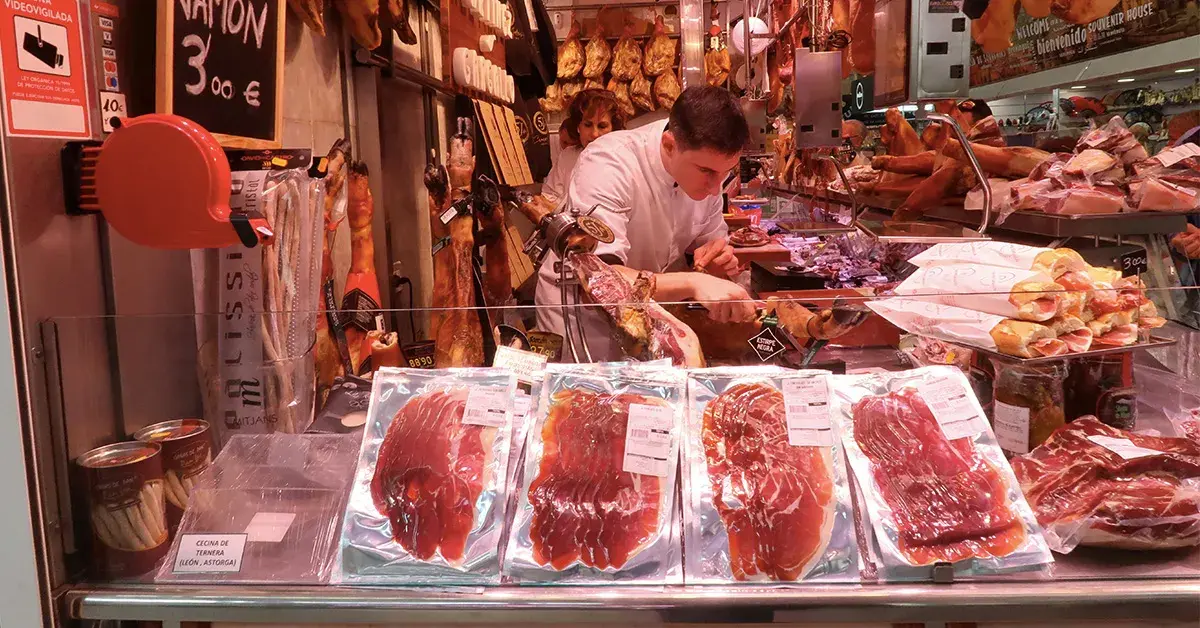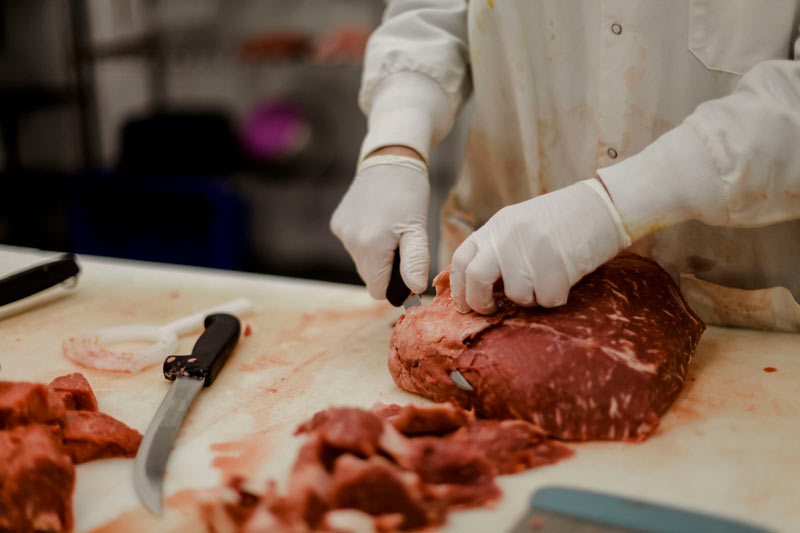Browse Through Bagley Farms Meat Market Edwardsville IL for Farm-Fresh Meat and Specialized Cuts
Browse Through Bagley Farms Meat Market Edwardsville IL for Farm-Fresh Meat and Specialized Cuts
Blog Article
Reveal the Art of the Butcher's Cut in a Modern Meat Market
In the ever-evolving landscape of modern-day meat markets, the butcher's cut has actually transcended its typical roots, combining old-time craftsmanship with contemporary practices. bagley farms meat market edwardsville il. Today's butchers are not just cpus of meat; they are well-informed craftsmens who emphasize sustainability and moral sourcing. Their competence in picking and preparing cuts customized to details culinary demands supplies an unmatched eating experience. Yet, what genuinely sets the modern-day butcher apart is their capacity to forge a much deeper link in between customers and the beginnings of their meat. Just how do these masters equilibrium custom with advancement, and what implications does this have for the future of meat consumption?
Evolution of Butchery Methods

The mid-20th century saw butchery strategies further fine-tuned by clinical insights right into muscular tissue biology and meat aging, boosting both tenderness and taste. Advancements like vacuum cleaner product packaging and refrigeration extended product shelf-life, permitting butchers to branch out offerings and improve high quality control. This period also noted the surge of specialized equipment, such as band saws and meat slicers, which enhanced precision and performance in meat processing.
Computerized systems now aid in monitoring pet provenance and optimizing cuts to fulfill particular client choices. In addition, a revival in artisanal butchery has actually emerged, blending traditional abilities with modern-day knowledge to cater to consumers looking for honest and lasting meat alternatives.

Comprehending Meat Cuts

Recognizing the ins and outs of meat cuts is essential for both butchers and customers seeking quality and worth. Each cut comes from a different part of the animal, passing on one-of-a-kind flavors, structures, and cooking approaches. Proficiency of these differences not only enhances culinary experiences however likewise makes best use of the utility of each carcass. For butchers, exact cuts show ability and respect for the craft, guaranteeing minimal waste and optimum yield.
The main categories of meat cuts include primal, sub-primal, and retail cuts. Primitive cuts, such as the loin, rib, and chuck, are the big areas initially divided from the carcass. Butchers after that damage these down further right into sub-primal cuts, prior to ultimately creating retail cuts available to customers, like ribeye or tenderloin. Each phase requires careful interest to physiological framework and muscular tissue structure.
Comprehending muscle mass structure is crucial; muscles made use of more frequently by the animal often tend to be tougher and are best suited for sluggish cooking techniques, while less-used muscular tissues, like those found in the loin, are extra tender and ideal for barbecuing or roasting. Experience with these differences empowers consumers to make informed choices, boosting their cooking endeavors.
Choosing High Quality Meat
Choosing the right meat involves greater than simply picking a visually attractive piece from the screen. The art of choosing top quality meat requires a discerning eye and understanding of specific qualities that symbolize freshness and quality. Pay attention to the color; beef must have a brilliant, cherry-red shade, while lamb ought to display a soft pink tone, and pork a pale pink. This indicates the meat is fresh and hasn't been exposed to oxygen for too lengthy.
Secondly, take into consideration the marbling, which refers to the white streaks of fat within the muscular tissue. Correct marbling is an essential indicator of inflammation and taste, as it melts throughout food preparation, improving the meat's juiciness. Remember, higher marbling usually associates with superior high quality cuts, such as USDA Prime.
Texture is one more critical see element; meat must feel strong to the touch, not slimed or extremely soft. Additionally, be conscious of the fragrance. Fresh meat should have a tidy, neutral odor, devoid of any kind of sour or off-putting odors.
Combining Cuts With Food Preparation Techniques
Successfully coupling cuts of meat with the appropriate cooking methods is necessary for achieving ideal taste and structure. Various cuts vary in inflammation, marbling, and connective cells web content, each requiring specific methods to open their potential. For example, tender cuts like filet mignon and ribeye, with their fundamental marbling, advantage from high-heat, quick-cooking approaches such as grilling or pan-searing. These approaches boost the meat's natural flavors and make certain a juicy finish.
On the other hand, tougher cuts like brisket and chuck roast are rich in collagen, which breaks down right into gelatin when cooked gradually. These check my reference cuts are perfect for braising or slow roasting, permitting the meat to soften with time and establish deep, complicated tastes. Cuts such as brief ribs and pork shoulder make out well with slow-cooking methods, where prolonged cooking times transform their durable appearances into succulent meals.
Lamb shanks and oxtail, which call for prolonged food preparation to tenderize, are perfect candidates for stewing or slow-moving simmering. These approaches coax out rich, hearty flavors while preserving wetness. By understanding the distinct attributes of each cut, chefs and home cooks alike can elevate their cooking developments, making certain each meal is both satisfying and remarkable.
The Butcher's Role Today
Navigating the developing landscape of the modern meat market, the butcher's duty today expands past simple preparation of cuts. Contemporary butchers are culinary artisans, teachers, and supporters for sustainable techniques.
Along with crafting exact cuts, butchers now involve straight with customers, providing cooking advice and customizing choices to suit private needs and preferences. Their expertise in meat aging, marbling, and flavor profiles encourages consumers to make informed choices, boosting their culinary experiences. This personalized solution exemplifies the butcher's advancing function as browse around this site a trusted consultant in the kitchen area.
Moreover, butchers are critical in decreasing waste, making use of whole pets to develop varied products such as sausages and supplies - bagley farms meat market edwardsville il. This detailed technique not only respects the animal yet also aligns with contemporary sustainability goals. This way, the modern butcher symbolizes both tradition and technology, adapting to an ever-changing market while maintaining the virtuosity and honesty of their craft

Verdict
Mastery in recognizing diverse meat cuts and top quality indications equips butchers to provide enlightened suggestions, aligning details cuts with ideal cooking approaches. By recognizing historical practices while accepting modern demands, the butcher's role continues to be essential in today's sophisticated meat market.
Report this page